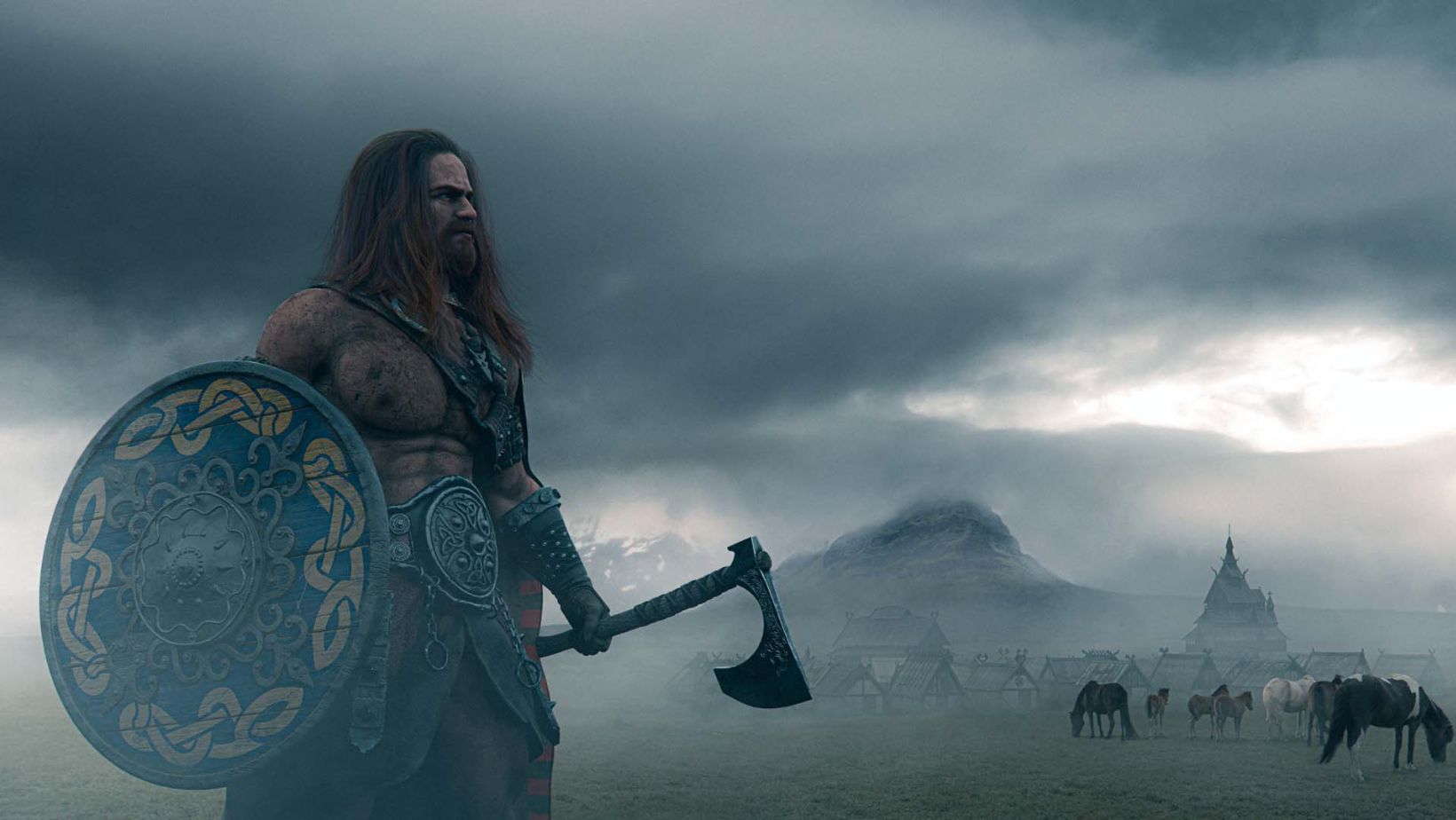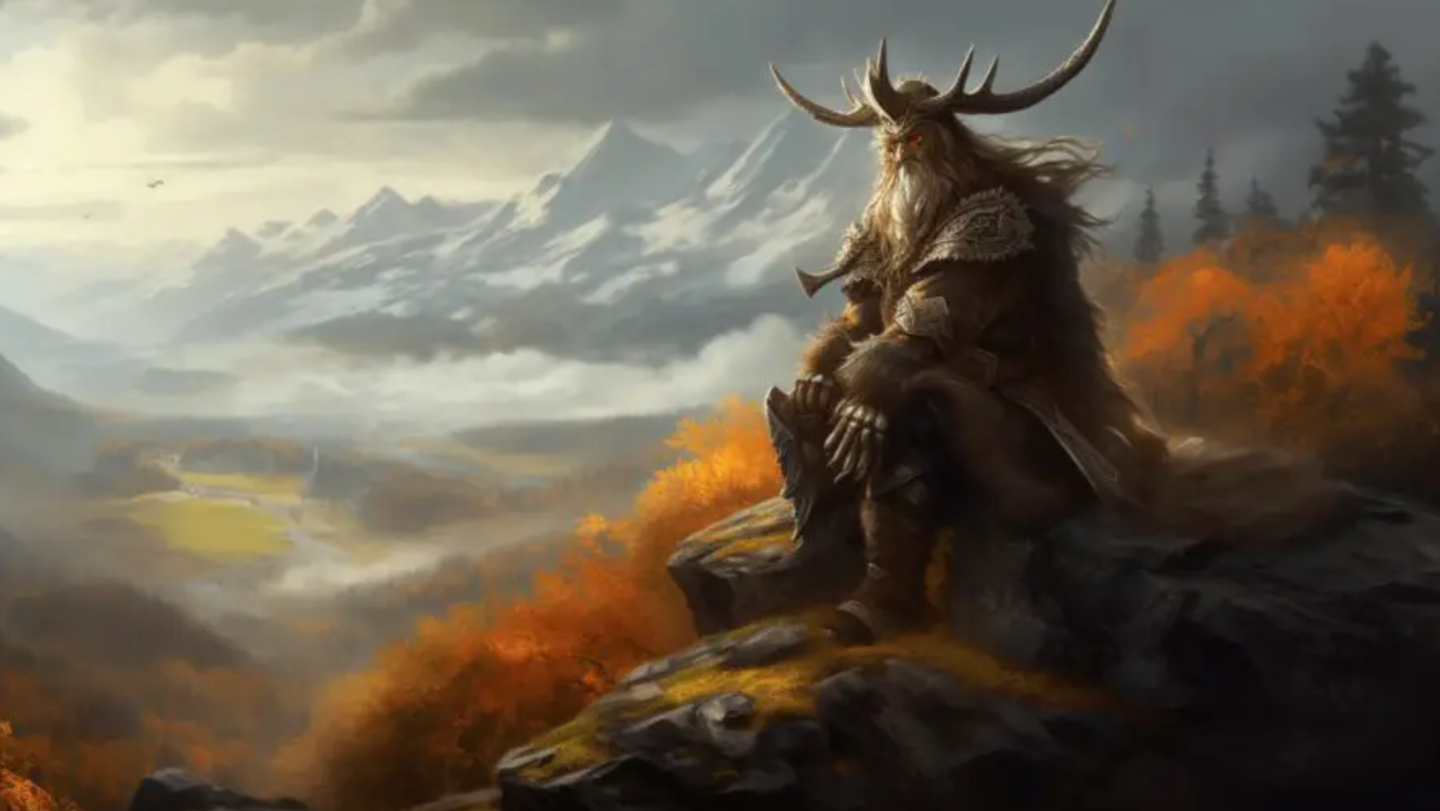Ever stared up at the night sky, gazing at constellations and wondering about those who did the same thousands of years ago? Those ancient folks from Northern Europe – known as Vikings – had their own tales spun around stars. Tales that revolved around a complex cast of gods, giants, mystical creatures, and magical realms. These stories make up what we now call Norse mythology. If you’re unfamiliar with it, here’s a Beginner’s Guide to Norse Mythology that you may want to check.
A fascinating universe filled with sagas of courage, betrayal, love, and rivalry awaits you on this journey into Norse myth.
Ask yourself how it all began. Want to know more about Odin’s Hall or Thor’s Hammer? Are you curious about Yggdrasil—the tree connecting nine cosmic worlds?
You’re in luck! Our complete beginner’s guide to Norse mythology will take you on an epic voyage through these myths.
Table Of Contents:
- The Roots of Norse Mythology
- Delving Deeper into the Nine Worlds of Norse Mythology
- The Intricacies of the Norse Pantheon
- The Primary Sources of Norse Mythology
- FAQs in Relation to Beginner’s Guide to Norse Mythology
- Conclusion: Beginner’s Guide to Norse Mythology
The Roots of Norse Mythology

Our journey into the fascinating world of Norse legend starts with its ancient roots. This mythical tradition, rich in legendary sagas and complex characters, offers an intriguing insight into Northern Europe’s past.
The Ancient Norse Religion and Its Pagan Beliefs
Ancient Nordic societies practiced a form of religion that was deeply intertwined with their daily lives. The pre-Christian religion, known as the ancient Norse religion or simply Norse paganism, influenced much about their worldview.
This wasn’t your run-of-the-mill faith – it included practices such as ancestor veneration and magic rituals to communicate with mystical creatures. Imagine asking a Norse pagan magic master for help before embarking on dangerous sea voyages.
Norse Pagan religion (Norse Paganism) worshipped many gods, including Odin and Búri – considered by some scholars to be analogous to Zeus in Greek mythology – alongside Thor (not just Chris Hemsworth), Loki (the trickster), and Freya (goddess of love), among others. But let’s not forget the frost giants who were equally essential players within these tales.
Unraveling the Complexity of Norse Characters
Without delving into its vast pantheon where Norse gods co-existed with giants, no discussion about this mythos would be complete. Unlike most modern monotheistic religions, which tend towards clear divisions between good and evil entities, these lines are often blurred within Norse myths, making it far more intriguing than one might initially think.
Intricate relationships played out amongst this divine cast, creating stories that still captivate audiences today – from familial feuds like those involving Loki’s shenanigans, causing mayhem wherever he went, to epic battles with frost giants in a world that seemed as real and tangible as our own.
While gods were revered, they weren’t necessarily seen as infallible beings. They had their strengths and weaknesses like humans do today – Odin was wise but battle-hungry; Thor was strong but quick-tempered; Loki’s cleverness often got him into trouble.
The characters of Norse myth present a multifaceted representation of humanity, demonstrating the intricacies of human nature. They don’t just embody moral absolutes. They make us feel connected. Even though their realm is far removed from ours, we can still relate.
Key Takeaway: Beginner’s Guide to Norse Mythology
A variety of deities, each with their own distinct personalities and domains. Gods like Odin, Thor, and Freya didn’t just rule over the heavens; they were part of every aspect of life. They represented elements such as war, love, wisdom, and even farming. The fascinating tales from this era are not just relics of a bygone age but continue to inspire today’s pop culture.
Delving Deeper into the Nine Worlds of Norse Mythology
Peeling back the layers of ancient Norse religion, we find a universe rich with mystic realms. Each realm within this Norse world houses different inhabitants and boasts unique characteristics.
The Central Role of Yggdrasil
To understand these nine worlds, it’s vital to start with Yggdrasil. This colossal ash tree is an intergalactic freeway connecting Asgard to other dimensions, such as Midgard and Jotunheim, the realm of giants.
Yggdrasil is like a giant subway system running through time and space. Imagine New York City’s complex metro network – but instead of boroughs or neighborhoods at each stop, there are realms filled with gods, humans, elves, or even giants.
This great ash tree connects all corners of the cosmos and hosts various mystical creatures on its branches and roots. The squirrel Ratatoskr scurrying up and down carrying messages between an eagle perched atop the tree and Nidhogg gnawing at its roots provides quite a sight for anyone fortunate enough to visit.
Exploring Asgard and Midgard
Asgard – home to Aesir tribe gods – stands high in our cosmic (Norse) exploration list because here you’ll learn about Odin’s hall where fallen warriors feast eternally awaiting Ragnarok (the end times). I can’t help but think how much more lively Valhall must be compared to your regular retirement home.
Situated just below Asgard via Bifrost (the rainbow bridge) rests Midgard, Earth as we know it today. Now imagine living in San Francisco and finding out that beyond the Golden Gate Bridge lies not Marin County but another world populated by deities. That’s Midgard for you.
Midgard is not just the dwelling place of humans but also a strategic chess piece in the cosmic game between gods and giants, with every decision taken in Asgard echoing across Bifrost down to Midgard.
The Mysteries Beyond
Apart from Asgard and Midgard, seven other realms exist. Each one is unique, with its own distinctive features and inhabitants.
Key Takeaway: Beginner’s Guide to Norse Mythology
Delve deeper into the mystic realms of Norse myth, with Yggdrasil at its core, connecting nine worlds like a cosmic subway. From Asgard’s lively hall to Midgard’s earthly realm, each stop reveals fascinating inhabitants and unique characteristics. It’s more than just mythology; it’s an intricate cosmic game between gods and giants.
The Intricacies of the Norse Pantheon

Within the vast tapestry of Norse mythos, two tribes of gods hold significant sway – the Æsir and Vanir. Their intricate dynamics form a crucial aspect of understanding this fascinating belief system.
Rooted deeply in Northern European’s cultural fabric, these deities’ interactions present an exciting mix of cooperation and conflict. But why do they differ so? Let’s peel back some layers to understand better.
The Role of Giants in Norse Mythology
To comprehend the relationship between Æsir and Vanir, we must first examine another critical group – the Jötnar or giants. Often misunderstood as merely antagonistic figures within Norse myth, their role is much more nuanced.
In fact, it’s essential to note that many key figures among both Æsir and Vanir are either descended from giants or have strong ties with them. Odin himself was born from giant stock.
This complex interplay between gods and giants hints at a worldview rich in contrasts where boundaries blur and vice versa: friend can become foe; outsider may turn kin. Jotnar was often associated with natural forces such as frost (6), further symbolizing their deep connection with primal aspects of existence.
A Closer Look at The Aesir Gods
Moving onto our primary focus – let’s delve into Aesirs first – often perceived as ‘warrior’ gods for their active involvement against chaos-causing entities like giants or trolls. They include well-known deities like Thor, who wields his mighty hammer, and Odin, who presides over Asgard in Odin’s hall, Valhalla.
The Æsir also show a particular knack for diplomacy – marrying off their own to establish peace treaties with the Vanir or giants. One famous example is Thor’s wife, Sif, herself of giant descent.
Voyage into The Vanir Gods’
prosperity. Unlike the Aesirs, they’re tied closely to Earth’s bounty and richness.
Key Takeaway: Beginner’s Guide to Norse Mythology
Exploring Norse mythos reveals two main god tribes, the Aesir and Vanir. The giants or Jotnar are key figures in their complex dynamics. Understanding these intricate relationships helps us see a rich worldview where roles blur and change, like warriors turning diplomats. So, let’s dive into this fascinating world of gods, giants, and mythical interplays.
The Primary Sources of Norse Mythology
When we journey back to uncover the secrets of ancient Norse myth, two primary sources light our way. These are the Prose Edda and Poetic Edda.
The Prose Edda, penned by Icelandic writer Snorri Sturluson, is an extensive guide to Norse mythos. Written around 1220 AD, it presents a structured compilation akin to reading an authentic educational book on Viking age lore.
The Influence of Snorri Sturluson
Saga fans will recognize Snorri Sturluson as a household name in Iceland during the Middle Ages. This renowned scholar was not just dipping his toes into unfamiliar waters but diving headfirst into ancient traditions passed down through generations.
A true wordsmith, Snorri’s writing style provides us with more than mere historical knowledge about Nordic gods like Odin or Thor; he paints vivid images that breathe life into old tales. We see giants roaming icy landscapes and hear echoes from Odin’s hall resounding across centuries.
This insight doesn’t come without its share of challenges, though. Reading through original text requires one to have some level of proficiency in Old Norse – talk about needing a translator.
Diving Deeper: The Poetic Edda
If you think the Prose Edda is intriguing enough, hold onto your hats because here comes another twist – the Poetic Edda. It takes us further down the rabbit hole, adding a dash of poetry to our mythology cocktail.
The Poetic Edda is an anthology of ancient Norse poems telling tales of heroic deeds and divine exploits. This work, written by an anonymous author, predates Snorri’s Prose Edda and draws comparisons with it.
FAQs in Relation to Beginner’s Guide to Norse Mythology
How do I start learning about Norse mythology?
To start your journey into Norse myth, read basic overviews online, dive into the Eddas, and consider a beginner’s guidebook.
What books should I read to learn about Norse mythology?
“The Prose Edda” and “Poetic Edda” by Snorri Sturluson are great starting points. Neil Gaiman’s “Norse Mythology” is also highly recommended.
What are the three primary levels of Norse mythology?
The three primary realms in Norse mythos are Asgard (gods’ realm), Midgard (humans’ world), and Jotunheimr (giants’ land).
What age is Norse mythology appropriate for?
Norse myths have complex themes suitable for teenagers or adults. But kid-friendly versions exist for younger readers, too.
Conclusion: Beginner’s Guide to Norse Mythology
Norse myth is a universe rich in tales, mystical creatures, and ancient Norse pagan practices. You’ve journeyed into the past through this Beginner’s Guide to Norse Mythology.
The roots of Norse religion (Norse Paganism) were explored – an ancient faith that has influenced today’s multi-religious world. You’ve delved deeper into the nine worlds interconnected by Yggdrasil.
You’ve met gods and giants, from Odin in his grand hall to Thor with his mighty hammer. You have understood more about their complex characters and roles within these sagas.
Finally, we paid tribute to Snorri Sturluson, who brought us Prose Edda—our primary source for understanding these myths.
Your voyage doesn’t end here. It just started today! There’s so much more awaiting discovery within the pages of old Icelandic sagas!

